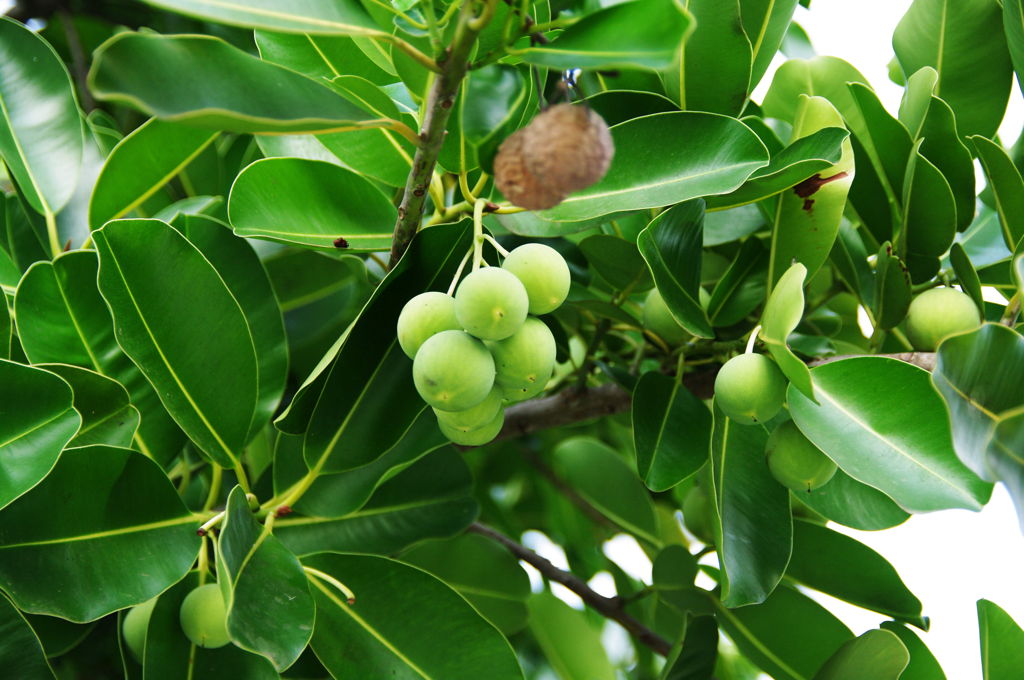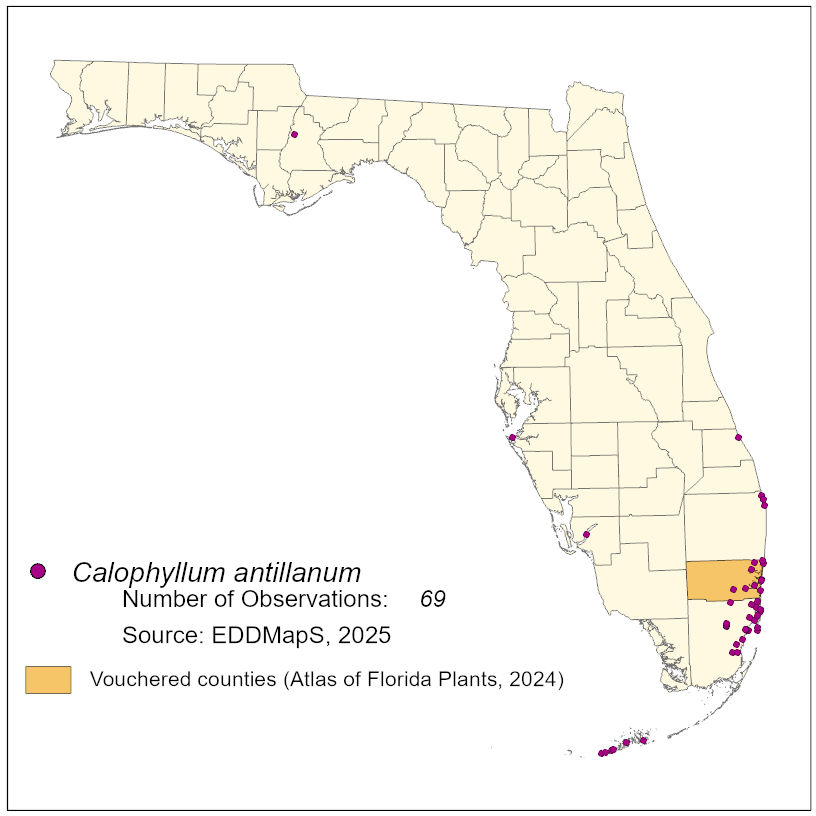Common Name: santa maria
Family: Clusiaceae
Common Synonyms: none
USDA Hardiness Zone: 9b-11
Growth Habit: Tree
Origin: Caribbean, Cuba to Grenada
FISC Category: 1
FDACS Listed Noxious Weed: No
Introduction Date: 1964
IFAS Assessment:

Medium sized tree to 12 m tall with glossy, leathery leaves. Leaves opposite, simple, stalked, elliptic, 10-15 cm long with entire margins and numerous parallel secondary veins. Small fragrant white flowers in clusters at leaf axils. Flowers have many yellow stamens. Fruit is a round, hard-shelled, brown drupe.
Coastal areas, including mangroves
Similar to mast-wood (Calophyllum inophyllum), also an exotic naturalized in South Florida, which is a larger tree with larger leaves, flowers, and fruits to 4 cm wide.

NA
Dave's Garden. 2014. PlantFiles: Basket Leaf, Calophyllum antillanum. http://davesgarden.com/guides/pf/go/95056/. Accessed on June 20, 2014.
Langeland, K.A., H.M. Cherry, C.M. McCormick, K.C. Burks. 2008. Identification and Biology of Non-Native Plants in Florida's Natural Areas-Second Edition. IFAS Publication SP 257. University of Florida, Gainesville, Florida.
Langeland, K.A., J.A. Ferrell, B. Sellers, G.E. MacDonald, and R.K. Stocker. 2011. Integrated management of non-native plants in natural areas of Florida. EDIS publication SP 242. University of Florida, Gainesville, Florida.